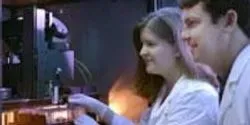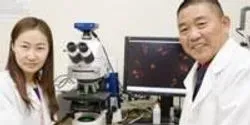Neuroscience


UT Southwestern Medical Center’s Texas Institute for Brain Injury and Repair (TIBIR) has acquired a pair of TissueCyte 1000 microscopes, the latest generation in serial two-photon laser imaging, as a centerpiece of its new Whole Brain Microscopy Facility. The TissueCyte microscopes are the only ones of their kind in Texas, and two of just a handful in existence around the world.

Salk scientists discover a single protein that energizes both muscles and the brain.

A new study by scientists at the Wayne State University School of Medicine sheds significant light on our understanding of how brain networks contribute to obsessive-compulsive disorder in youth. Led by David Rosenberg, M.D., and Vaibhav Diwadkar, Ph.D., of the Department of Psychiatry and Behavioral Neurosciences, the research demonstrates that communication between some of the brain’s most important centers is altered in the disorder.

Up to 8 percent of people in the U.S. suffer from post-traumatic stress disorder (PTSD) as the result of witnessing or being the victim of a traumatic event. People with PTSD have been in a situation in which they were at risk of death, serious injury or sexual violence or have seen first-hand loved ones face such threats. They may experience flashbacks, emotional detachment and jumpiness, among other symptoms that affect their ability to function in everyday life.

A team of Clarkson University researchers is studying the possible links between reported hauntings and indoor air quality.

Neurodegenerative diseases, such as Alzheimer's and Parkinson's, affect more than 6.4 million Americans, according to the Harvard NeuroDiscovery Center. That number may double in the next 30 years as the population ages, unless medical researchers figure out what's happening at a cellular and molecular level and develop ways to treat or prevent these debilitating conditions.











